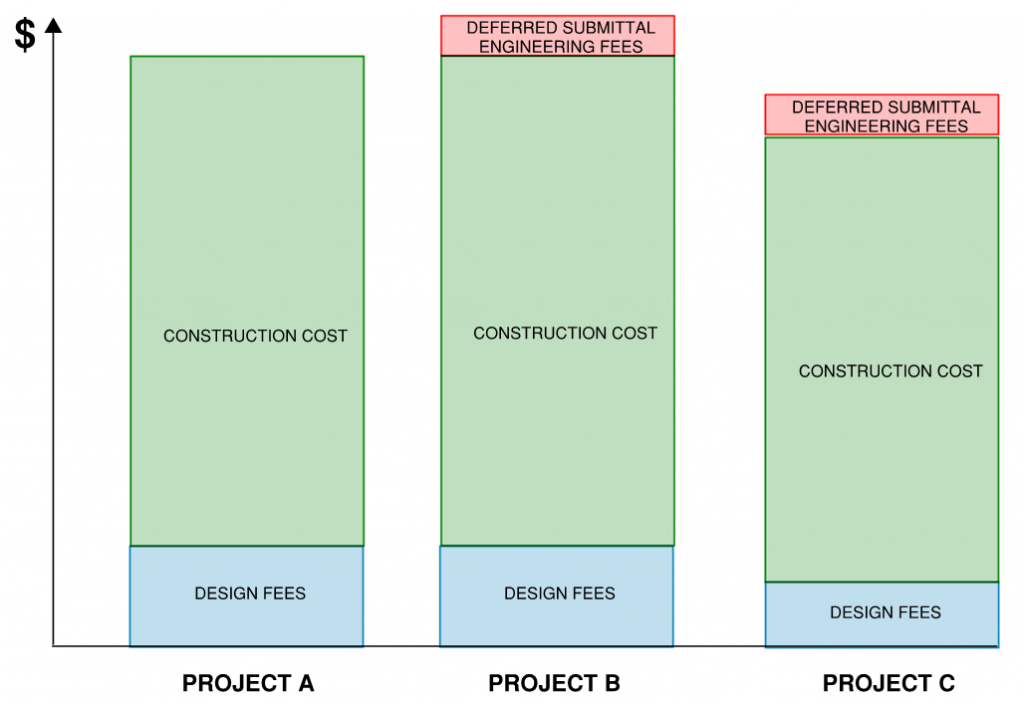July 18, 2019
In modern commercial construction there has been a stark increase in the number of items that are deferred by structural engineers when they submit construction documents for permit.
What is a deferred submittal?
Per the International Building Code a deferred submittal includes “those portions of the design that are not submitted at the time of the application and that are to be submitted to the building official within a specified period”.
In other words, a deferred submittal is a structural component of the building (that requires design by a PE) in which the design has not been completed when the project is submitted to the Authority Having Jurisdiction (AHJ). Typically, deferred submittals require the involvement of a professional engineer which the contractor must hire, then send the deferred submittal to the design team, who then reviews and if accepted sends the deferred submittal to the AHJ.

Why are components of the building deferred until after permit?
Depending on who you ask, you may receive one of the responses below:
- The component is a proprietary products which requires specialty engineers.
- e.g. metal-plate connected wood trusses, cold-formed steel trusses, metal building systems, pre-tensioned concrete members, curtainwalls
- To allow more efficient designs by allowing the contractor to select his preferred engineer who ostensibly is more familiar with the material, system, and/or contractors preferences.
- e.g. Simple structural steel connections such as simple shear connections, moment connections, etc. are typically deferred with the idea that it will allow the steel fabricator to select his preferred structural engineer who his well versed in structural steel connection design and is in tune with the fabricators preferred setup, for example, is the fabrication shop setup best for shear tab or single angle shear connections?
- To allow the design team (typically the structural engineer) to descope (reduce contractual requirements) since the onus for designing the component is passed on to the contractor.
- e.g. cold-formed (light-gage) metal framing, certain types of stairs and guardrails, certain types of structural steel connections
Why does it matter to the Owner?
The Owner should be cognizant of which items are being specified as deferred submittals, since ultimately all the structural components will have to be engineered, it is simply a matter of whether it is bundled into the design fees, construction cost or both.
The scenario where the engineering cost associated with a deferred submittal falls into the “both” category (depicted as Project B in the graphic below) is typically aligned with Response No. 3 above, since often in this scenario, the Owner paid the structural engineer a full structural design fee, and then had to turn around and pay the contractor (either through an increase in the original bid/price, or worse as a change order) to hire a structural engineer for the deferred submittal item.
Of course there are times when Response No.1 or No.2 are true as well and can lead to savings to the construction, reference Project C in the graphic below.

